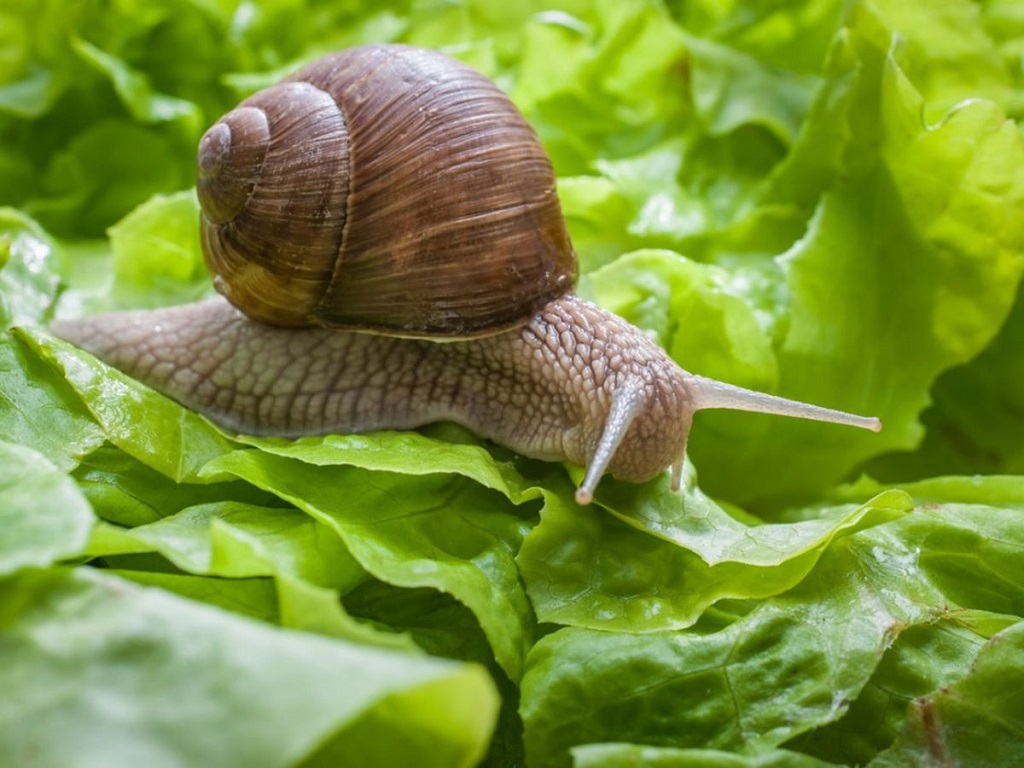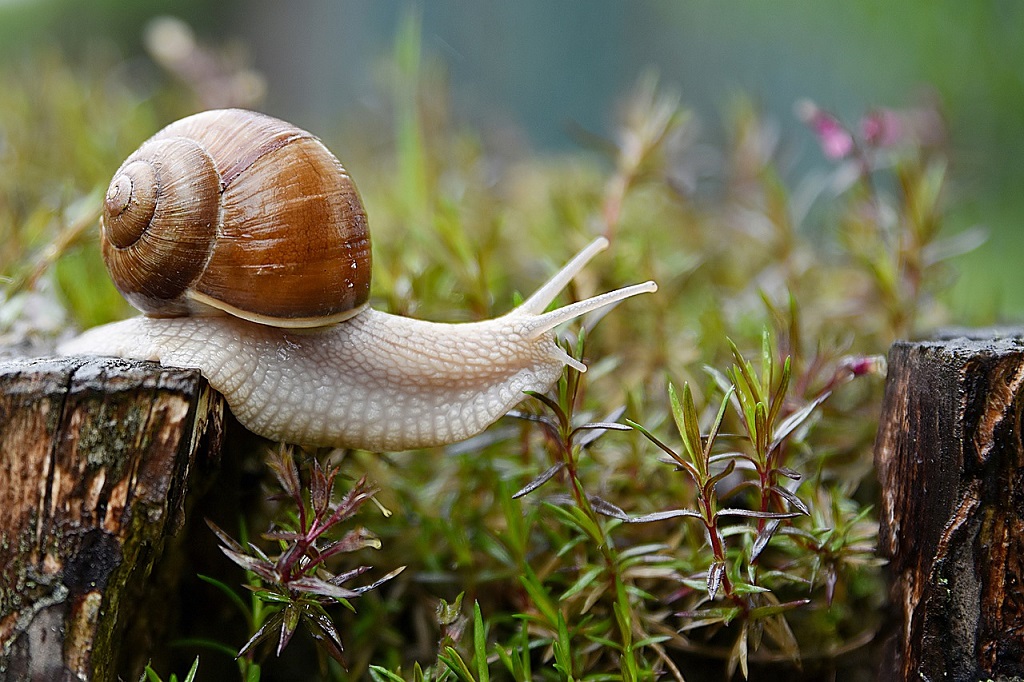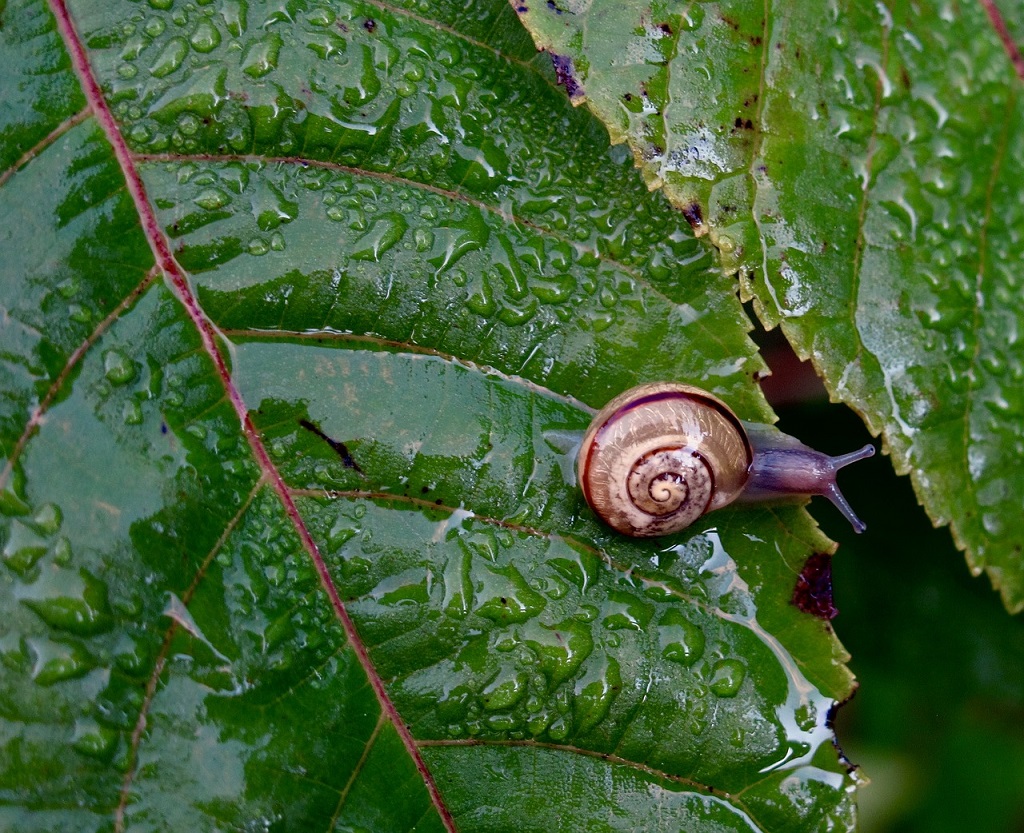
To care for a garden snail, provide a moist environment and feed it a diet of fresh vegetables and fruits. Avoid using pesticides in the area where the snail resides.
Caring for a garden snail requires attention to its environment and feeding habits. By providing a suitable living space and a nutritious diet, you can ensure the well-being of these small creatures. With the right care, garden snails can thrive and contribute to the health of your garden ecosystem.
We will explore the essential elements of caring for a garden snail, including housing, feeding, and common issues that may arise. Whether you’re a seasoned gardener or new to the world of snail care, understanding these principles is essential to creating a hospitable environment for your garden snail. Let’s delve into the specifics of caring for these fascinating and beneficial creatures.
Creating The Ideal Habitat

Garden snails need a suitable enclosure for their well-being. Choose a spacious glass or plastic tank to provide enough space for them. Ensure the enclosure has a secure lid to prevent escape and protect the snails from predators. The perfect substrate is essential for their habitat. Use damp soil, moss, or coconut coir for the substrate to maintain the right level of humidity.
Feeding And Nutrition
Garden snails have specific dietary needs that are essential for their health and well-being. Understanding Snail Diet is crucial to ensure they are getting the right nutrients. Snails are herbivores and their diet mainly consists of plant material such as leafy greens, fruits, and vegetables. It is important to provide a variety of foods to meet their nutritional requirements. Supplementing with calcium is also essential for a healthy snail diet. Calcium is important for their shell development and the proper functioning of their body. Adding calcium-rich foods such as crushed eggshells or cuttlebone can help provide the necessary amount of calcium. Remember to clean the food containers regularly to prevent the growth of mold or bacteria, which can be harmful to snails.
Managing Health And Hygiene
One of the essential aspects of caring for a garden snail is preventing parasites and diseases. Regularly inspect the snail’s shell for any signs of damage or abnormalities, such as cracks or discoloration. Providing a clean and well-maintained habitat is crucial to minimize the risk of infections. Keep the snail’s environment clean by removing any feces or leftover food to prevent the growth of harmful bacteria. Additionally, ensure a proper diet rich in nutrients and calcium to strengthen the snail’s immune system. Avoid overfeeding, as this can lead to excess waste that attracts pests.
Another vital factor in maintaining optimal health is maintaining proper moisture levels. Snails require a damp environment to thrive. Provide regular misting or use a shallow dish of water to maintain the desired humidity levels. However, ensure that the enclosure does not become too wet, as excessive moisture can promote the growth of harmful fungi and bacteria. Snails also benefit from a variety of substrate choices, such as moss or coconut fiber, which help retain moisture and provide a suitable habitat for the snail.
Important Guidelines
| Preventing Parasites and Diseases | Maintaining Optimal Moisture Levels |
|---|---|
| – Regularly inspect the snail’s shell for any damage – Provide a clean and well-maintained habitat – Remove feces and leftover food to prevent bacterial growth – Maintain a proper diet rich in nutrients – Avoid overfeeding to prevent attracting pests |
– Regularly mist or provide a shallow dish of water – Be cautious not to make the enclosure too wet – Choose an appropriate substrate, like moss or coconut fiber, to maintain moisture |

Handling And Interaction
Handling and interacting with a garden snail can be a fun and educational experience. To minimize stress during handling, it is important to handle the snail gently and with care. Avoid sudden movements or loud noises that can startle the snail. Make sure your hands are clean and free of any chemicals or residues that could harm the snail. Allow the snail to crawl on your hand or fingers at its own pace, without forcing it to move. Observe and enjoy the snail’s movements and behavior, but be careful not to handle it for extended periods, as this can cause stress. Remember that snails are delicate creatures, so treat them with respect and care.
Reproduction And Growth
Snails are fascinating creatures that reproduce differently than most animals. They are hermaphrodites, which means they have both male and female reproductive organs. This allows them to mate with any other snail they encounter.
Egg laying and incubation is a crucial part of a snail’s life cycle. After mating, both snails lay eggs in a warm and humid environment. The eggs are small and often hidden within the soil or under leaves. Snail eggs have a tough outer shell that protects them from predators.
The incubation period varies for different snail species, ranging from a few days to several weeks. During this time, the eggs develop and eventually hatch into baby snails. It’s important to create an ideal environment for the eggs to ensure successful incubation.
Caring for baby snails requires attention to their specific needs. They need a proper diet, consisting mainly of fresh vegetables such as lettuce and cucumber. A botanical garden is not just a collection of plants; it’s a sanctuary where nature’s beauty thrives. Providing a comfortable and spacious enclosure with suitable humidity levels is also crucial for their growth and development within these enchanting havens
Remember, raising baby snails can be a rewarding experience. By understanding their reproductive process and providing the necessary care, you can enjoy the wonders of watching these small creatures grow.
Frequently Asked Questions For How To Care For A Garden Snail
How Do You Care For A Garden Snail?
To care for a garden snail, provide a suitable habitat with soil, plants, and moist areas. Feed them a variety of fruits and vegetables like lettuce and cucumber. Spray water to keep their environment humid, and avoid handling them too much to prevent stress.
Snails also need calcium for their shells, so include crushed eggshells or calcium supplements in their diet.
What Do Garden Snails Eat?
Garden snails eat a variety of plant materials like leaves, stems, flowers, and fruits. They enjoy vegetables such as lettuce, cucumber, and celery. However, avoid feeding them toxic plants like onions or any plants treated with pesticides. It’s important to provide a balanced diet to meet their nutritional needs and promote their overall health.
How Often Should You Feed A Garden Snail?
It is recommended to feed garden snails every two to three days. Offer them a small amount of food, such as a lettuce leaf or a slice of cucumber, to avoid overfeeding and prevent food waste. Monitor their consumption and adjust the feeding frequency accordingly, ensuring they have access to fresh food at all times.
Can Garden Snails Drown?
Garden snails can drown if they are exposed to water for prolonged periods without access to a dry area. Avoid submerging them in deep water or leaving them in areas prone to flooding. While they need a moist environment, providing a shallow dish with damp moss or soil will create a safe and suitable habitat for them.
To sum up, caring for a garden snail requires patience, attention, and a nurturing approach. Transform your balcony into a lush oasis with our proven tips for successful balcony gardening. By providing a suitable habitat, feeding them a balanced diet, and monitoring their health, you can ensure the well-being of these fascinating creatures. Remember to handle them with care and respect their instincts.
Embracing the joys of nurturing a garden snail can be both educational and rewarding. Happy snail caring!
